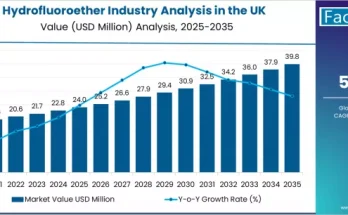The family of industrial processes for producing hydrogen gas is known as hydrogen production. By 2020, steam reforming of natural gas and other light hydrocarbons, partial oxidation of heavier hydrocarbons, and coal gasification will produce the bulk of hydrogen from fossil fuels.
Hydrogen generation technology works by tapping into natural energy sources and using electrolysis to generate hydrogen. During electrolysis, electricity is run through water, breaking apart the oxygen-hydrogen bond and generating pure molecular hydrogen. This process produces no harmful emissions or residues, making it a clean and sustainable energy source.
The global hydrogen generation market reached a value of US$ 139.10 Billion in 2022 and is expected to reach a market value of US$ 273.63 Billion by registering a CAGR of 7% during the forecast period 2022-2032.

Renewable Sources for Hydrogen Fuel Generation
Hydrogen fuel generation is an emerging technology that offers a renewable, sustainable source of green energy. But where does the hydrogen come from? That’s where renewable sources come in.
The most common sources of renewable hydrogen generation today are water electrolysis, steam reforming, and biological processes like algae farming. Water electrolysis separates H2O molecules into oxygen and hydrogen gasses using electricity; steam reforming involves reacting methane with heated steam to produce hydrogen; and algae farming captures the natural process of photosynthesis to produce clean energy.
While each method has its drawbacks—electrolysis can be expensive, steam reforming emits CO2, and algae farming requires careful manipulation—there’s no denying the potential of each to make a tremendous impact on sustainability. With advances in technology and more information about these methods becoming available, green energy through hydrogen generation technology continues to be an attractive option for those looking for ways to cut emissions and power their homes sustainably.
Pros and Cons of Hydrogen Fuel Generation
The main pro is that it is one of the most sustainable sources of energy available. Hydrogen is a clean burning fuel that produces no carbon emissions or other pollutants, making it one of the greenest sources of energy out there.
On the flip side, hydrogen fuel generation also has its drawbacks. Hydrogen fuels can be difficult to store and transport safely, as they are highly flammable and explosive. Additionally, it can be difficult to find compatible infrastructure for hydrogen-powered vehicles, as well as finding qualified technicians to service them.
Overall, hydrogen fuel generation has great potential for providing clean and renewable energy for a variety of activities – from powering homes and office buildings to fueling transportation. However, it is important to consider both the pros and cons before investing in this technology.
Future Trends in Hydrogen Generation Technology
The future of hydrogen generation technology looks bright. Major advances are being made in the field, with more and more countries investing heavy resources into research and development for more efficient and cost-effective solutions. There is a lot of potential for hydrogen generation as a clean and green energy source, and the industry is optimistic about what this could mean for the future.
Renewable Hydrogen
One of the major trends in the hydrogen generation space is renewable hydrogen – this involves producing hydrogen from natural resources such as wind, water, sunlight or biomass. With renewable hydrogen being generated from an endless source of energy, it can provide a reliable and sustainable fuel that can be used to power cars, homes or factories. This could be a key part of building a green energy economy and is an area that researchers are investing heavily in.
Fuel Cells
Another trend in hydrogen generation technology is the use of fuel cells. Fuel cells essentially convert chemical energy into electrical energy using hydrogen as its primary fuel source – it does this by combining oxygen from the air with hydrogen gas to produce water, heat and electricity without any combustion. Fuel cells have been around since the 1800s, but recent technological advances have made them much more efficient – they are now being applied to power homes, businesses and even cars, making them an exciting prospect for green energy in the future.
As research continues to invest into these technologies, we can expect that hydrogen generation technology will continue to improve and become increasingly accessible over time – hopefully leading to a cleaner and greener future for all.
Countries Leading in Hydrogen Fuel Generation
You might have heard that countries across the world are investing in hydrogen fuel generation, and for good reason. Not only does this technology provide a clean, sustainable energy source, but it’s becoming increasingly cost-effective to use too.
So who are leading the charge when it comes to hydrogen fuel generation? Here’s a look at the countries that are making waves in the green energy industry:
- Japan – Japan currently has more than 200 hydrogen fueling stations and has plans to expand this network over the next few years. The country is focus on transforming its transportation industry by 2030, and hydrogen fuel cell technology is playing a big role in this shift.
- Germany – Germany is aiming to build up its own hydrogen infrastructure, with plans to invest more than €7 billion and create 1,000 new stations by 2023. The country also recently launched a €9 billion funding package that will help push forward research projects into hydrogen fuel cell technology with European partners.
- United Kingdom – The UK has committed to achieve net-zero emissions economy-wide by 2050 and is focusing on building out its own network of fueling stations for cars powered by hydrogen fuel cells. It’s already built 31 new fueling stations since 2015 and hopes to have up to 65 operational by 2030.
- China – China is investing millions of dollars into research and development of green hydrogen production as part of its commitment to reduce greenhouse gas emissions over the next decade or so. It’s also pushing forward with plans to invest billions of dollars in solar power projects as well as other renewable energy sources like wind power, geothermal power and hydroelectric power generation systems
Benefits of Using Hydrogen Fuel to Generate Green Energy
Hydrogen fuel generation is becoming a more popular choice when it comes to green energy, and there are more than a few reasons why. The biggest benefit to using hydrogen fuel to generate green energy is that it is clean and renewable.
Clean Technology
When hydrogen fuel is burned in an oxygen environment, the only output is water vapor. This means that there are no emissions of carbon dioxide or other greenhouse gasses released into the environment. In addition, hydrogen can be used as a clean source of power for vehicles and other machines, reducing or eliminating pollutants from the atmosphere.


